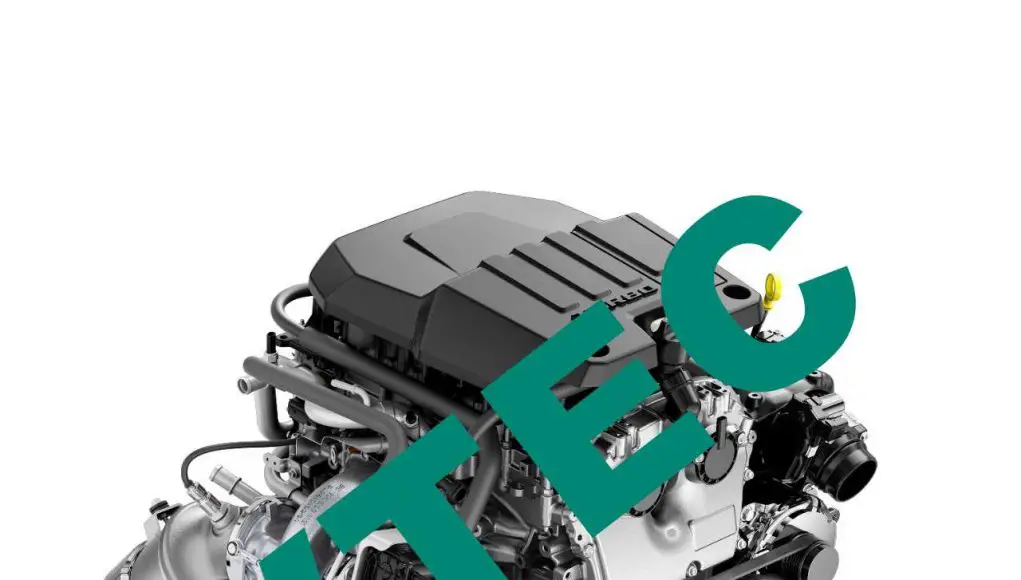Chevrolet highlighted a couple of technological features of its 2.7L Turbo four-cylinder including its TriPower Valvetrain which is basically VTEC ala Honda.
GM shocked the automotive world earlier yesterday (May 18, 2018) by introducing an optional turbo four-cylinder powertrain for its 2019 Chevrolet Silverado. In the press release and already on a few videos floating around Youtube is what Chevrolet calls TriPower technology. Basically, the camshafts of the 2019 Chevrolet Silverado have three cam profiles, two for economy and one for power which is pretty much what VTEC does. So yes, there’s a bit of Honda inspired technology in the new Silverado.
This new Silverado four-cylinder has to do two things well, provide good power since it’s a truck and achieve a class-leading MPG hovering somewhere around 30 MPG on the highway.
To achieve that MPG goal, they’ve lopped off two cylinders and thrown a whole host of fuel-saving technologies.
The Turbocharged 2.7-Liter Chevrolet Silverado Shows Just How Far Truck Engines Have Come – https://t.co/evHqBy4ZRv pic.twitter.com/POQXNRGruV
— The Fast Lane Truck (@TFLtruck) May 18, 2018
Enter TriPower Technology.
According to Chevrolet’s official press release that means,
The system’s electro-mechanical variable camshaft effectively allows the engine to operate with three different camshaft profiles, complementing the variable valve timing system to deliver optimized operating modes for different engine speeds and loads:
1. High valve lift for full power.
2. Low valve lift for balance of power and efficiency.
3. Active Fuel Management shuts down two of the cylinders in light load conditions to further conserve fuel.
“It’s like having different engines for low- and high-rpm performance,” said Sutter. “The camshaft profile and valve timing is completely different at low and high speeds, for excellent performance across the board.”
The camshaft design alters the lift of the intake and exhaust valves. As the engine load changes, electromagnetic actuators allow a movable shaft containing different cam lobes to shift imperceptibly between high-lift and low-lift profiles.
Instead of just telling you about it, thanks to The Fast Lane Truck, the embargo has been lifted and TFLT talked to Chevrolet’s Engineer that headed this new engine. I’ve already FF’d it to 4:22 where he explains TriPower technology.
If this “different cam lobes for different engine loads” technology sounds familiar it’s because it’s pretty much a variant of variable valve cam switching (not to be confused with simply cam phasing.)
Whereas Honda’s VTEC system traditionally uses two cam profiles, one for economy and one for power, this TriPower valvetrain system uses three cam lobes. Honda had also has a 3 cam lobe cam switching system called 3-stage VTEC aka VTEC-E, but that’s another story.
As explained in the video above, this TriPower system, like Honda’s system, uses a sliding cam profile that is electrically actuated within milliseconds depending on various engine conditions, presumably the main one being RPM.
Honda’s VTEC system is hydraulically actuated using engine oil pressure, given certain engine conditions, where the high-lift cam lobe is actuated. Hence, VTEC kicking in. Using an electrically actuated pin in the sliding cam probably makes for seamless and instantaneous shifts in power.
Also, Honda’s VTEC system was a replacement for turbocharging giving smaller naturally aspirated engines power if they user needed it. This TriPower valvetrain technology works together with a single turbo in order to provide good economy and class-leading power.
TriPower valvetrain technology isn’t this engine’s only party trick as this 2.7L Four cylinder also uses turbocharging with something called dual-volute turbocharging for more torque, cylinder deactivation, active thermal management, an electric water pump, direct fuel injection, an integrated exhaust manifold and a few other technologies.
Just to be clear, variable cam switching isn’t entirely Honda’s invention but they ARE the ones who popularized it so anytime someone has a system that switches cam lobes, it’s not Nissan’s VVL or Toyota’s VVTL-i anyone thinks of, it’s Honda’s popular VTEC.
So, yah, I’m saying this 2.7L four-cylinder from Chevrolet has VTEC!
If you have anything to add to this discussion of Chevrolet’s VTEC truck, go ahead and leave a comment below!




Its nothing like VTEC at all
How so? Both use different camshaft profiles to achieve more power during given conditions. Sure, one is less complicated than the other, but the principle behind the technology is the same.